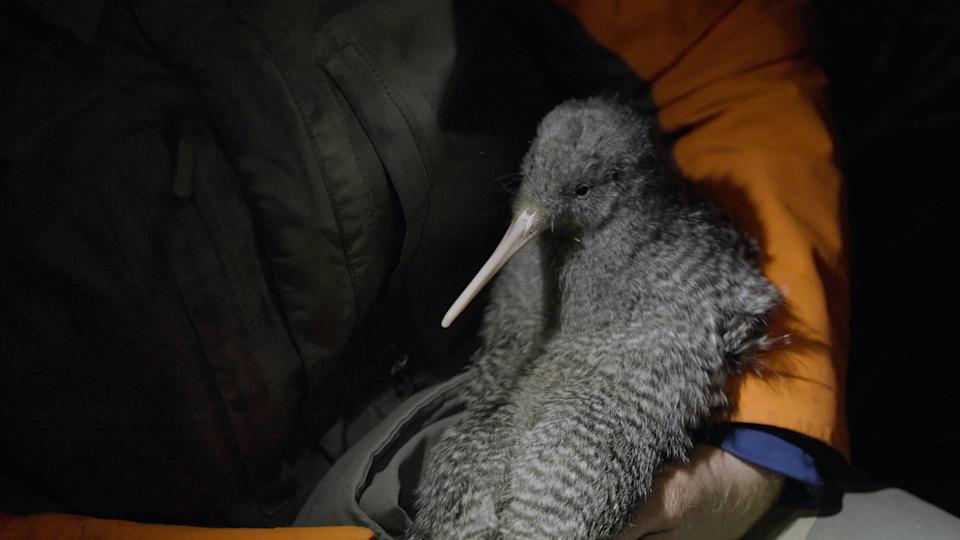Incredible video taken by a hunter has overturned 46 years of thinking about the extinction of a flightless bird on mainland New Zealand Aotearoa.
It had been thought little spotted kiwi (also known as kiwi pukupuku) only survived on small islands and protected areas where it was translocated following significant declines.
Luke Hill had been part of a crew tasked with controlling tahr, an invasive species of fast-moving alpine sheep that has adapted to the rugged 46,500-hectare Adams Wilderness Area in the Southern Alps, and if numbers go unchecked, they can destroy plants that provide food and shelter for native species.
Like Australia, New Zealand is overrun with feral animals, and it was the attacks from stoats, cats, and ferrets, and dogs, combined with habitat destruction, that led to the decline of the little spotted kiwi.
It was close to midnight, and Hill was making his way down to camp through “tough bush” when he spotted the rare bird. Thinking quickly, Hill whipped out his mobile phone and began to film. The video he took that night (seen below) is grainy, and it’s only just possible to make out the small bird behind a fallen log.
Related: Concern as rare birds retreat to mountains where giant moa became extinct
There are five species of kiwi, and because Hill has a background in conservation, he immediately knew he wasn’t looking at one of the common ones. But he was yet to understand the “magnitude” of his sighting.
Mission to track down rare kiwi in NZ wilderness
Hill’s footage contained enough information to excite the Department of Conservation, and it choppered out a ranger and his sniffer dog to the remote location. Ranger Iain Graham’s mission was to catch one of the birds and extract some of its tiny feathers for DNA testing.
Out in the sodden wilderness, he could hear the kiwis “duetting”, distinct calls between a male and female. But the birds proved too fast to catch. “We were in rough terrain, in typical west coast weather, and I was running out of dry clothes,” he said.
With time running out, they captured the female on their final night. He then returned with a colleague and tracked down the male, and both have been fitted with transmitters.

The male little spotted kiwi was captured and tagged during a return mission. Source: Lucy Holyoake/DOC
Surprising kiwi facts
All kiwi species are threatened with extinction.
Unmanaged populations are declining by two per cent every year.
Their eggs are roughly six times bigger than those laid by most birds their size.
Rediscovery of rare kiwi is like ‘finding a needle in a haystack’
The last time a little spotted kiwi was seen on the mainland in the wild was 1978. That year, Olivia Newton-John and John Travolta became a global sensation after the release of the movie Grease, disco songs by the Bee Gees were topping the charts, and the total population of New Zealand was just over 3.1 million people.
Emily King, the leader of the Kiwi Recovery Group, said the rediscovery this year was “thrilling” for the conservation world.
“Despite years of targeted searching, we hadn’t found them until now,” she said.
“We’re grateful to the hunter for reporting this and capturing evidence. It was like finding a needle in a haystack, but he pointed us to the right patch to start searching.”
Love Australia’s weird and wonderful environment? 🐊🦘😳 Get our new newsletter showcasing the week’s best stories.


